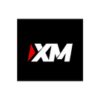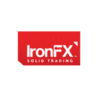JPMorgan, Citigroup, Wells Fargo, and Bank of America collectively contribute nearly half of US banking earnings in Q3.
According to data from BankRegData and reported by the Financial Times last weekend, of the approximately 4,400 active banks in the US, nearly half of all banking earnings in the third quarter came from a cadre of just four – JPMorgan, Citigroup, Wells Fargo, and Bank of America. Thank Jerome Powell, inflation, and the bank run on regional institutions this spring.

The Big Expands
Inflation-related macroeconomic headwinds including rising interest rates and a falling bond market lowered banking sector profits by 5% in the fourth quarter. However, excluding the Big Four banks, with roughly $1 trillion in assets under management, the 5% decline approaches 20%. As the four banks have taken 45% of industry earnings, up from 35% a year earlier and more than the 39% average over the past decade, the slowdown is in accordance with their expanding predominance.
This explains why: The public failure of Silicon Valley Bank and the bankruptcies of First Republic Bank and Signature Bank made depositors wary of non-Big Four banks and their risks. Small banks are racing to offer more prizes to keep depositors from fleeing owing to rising interest rates. Not unexpectedly, the biggest banks use that:
- In the third quarter, the major four banks paid an average of barely 2% annually on interest-paying accounts, while smaller banks paid an average of 3% annually. Furthermore, about 40% of accounts at regional banks pay interest, compared to just 30% at major league banks.
- “There hasn’t been a lot of deposit pressure on the biggest banks,” said Alexander Yokum, a CFRA equity research analyst, to the Financial Times. “You can see that smaller banks’ net interest margins have taken a much bigger hit than those of the larger banks.”
Reality Check: For the minor leaguers, that is by no means the worst situation. A Goldman Sachs note from earlier this year states that small and regional banks in the US hold more than half of the $5.6 trillion in outstanding commercial loans. Even worse, according to Morgan Stanley analysts, office and retail property valuations may decline by as much as 40%, increasing the possibility of a high default rate. Small banks are therefore setting aside a larger portion of their loans as reserves for possible losses. Hopefully, the industry has learned its lessons after SVB’s collapse.











